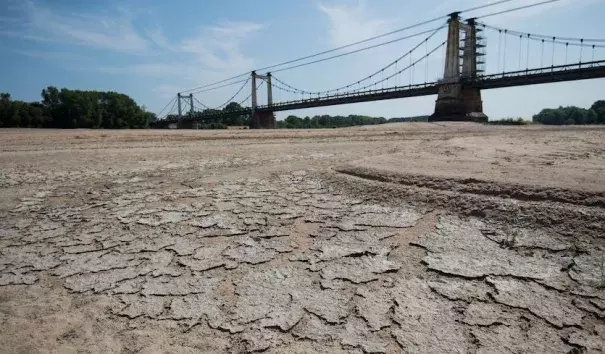All-Time Heat Records Melt in Europe; Worst to Come on Thursday

Three nations—Belgium, Germany, and the Netherlands—set all-time record highs on Wednesday, along with more than 60 cities across the region. Some of the all-time records broken were more than a century old. (These records are preliminary until confirmed by national weather agencies.)
...
The three preliminary national records were set in close quarters—each less than 50 miles from the intersection of Belgium, Germany, and the Netherlands.
— Kleine Brogel Air Base, Belgium: 39.9°C (103.8°F); old record 38.8°C in Liège in July 2015
— Geilenkirchen NATO Air Base, Germany: 40.5°C (104.9°F); old record 40.3°C in Kitzingen on July 5 and August 7, 2015
— Eindhoven, Netherlands: 39.3°C (102.7°F); old record 38.6°C in Warnsveld on August 23, 1944
...
This is the second record-smashing heat wave that Europe has seen this summer, following extreme early-season heat during the last few days of June. In that first round, many dozens of cities set record highs for June, and some of them broke all-time highs for any month, including Germany’s three oldest stations with reliable long-term data going back as far as 1824.
In France, about 25% of the nation’s 150-plus top-level weather observing stations have set all-time records this summer (through Wednesday), according to the French laboratory Keraunos. German meteorologist Michael Theusner told Category 6 that a total of 44 of the 490 German stations reporting on Wednesday had all-time high temperatures.
The upper-level pattern behind this week’s European heat includes a strong upper high over western Europe, flanked closely by upper lows over the northeast Atlantic and eastern Europe. The result is an “omega block” (so named for the Greek letter it resembles), which tends to be a resilient setup that can take days to run its course. At the surface, the omega block has allowed very hot air from northwest Africa to stream across the drought-parched terrain of Spain and France. The lack of soil moisture permits incoming sunlight to heat the ground very efficiently, thus stoking the blast furnace that Europeans are enduring.
The heat is expected to reach its apex on Thursday across western Europe. Toward the weekend, the intense heat will translate northward and eastward into parts of Scandinavia, where monthly and all-time records may fall. By early next week, upper-level high pressure—perhaps stronger than anything ever recorded at these latitudes—will extend from northern Scandinavia to the North Pole. This pattern may cause Arctic sea ice, which was already at a record low extent for the date on Wednesday, to diminish at a rapid rate into early August.
International weather records researcher Maximiliano Herrera points out that the two stages of Europe's 2019 heat are not unlike what happened in 1947, another intensely hot summer that saw major heat spikes in both late June and late July. The current heat wave will also test more than a few records set in the catastrophic heat wave of 2003 that took tens of thousands of European lives. A heat wave on par with 2003's was found to be made at least twice as likely by human-induced climate change, according to a landmark study carried out in 2004. A subsequent modeling study attributed hundreds of the 2003 deaths in Paris and London to the heat-boosting effects of climate change. A rapid-attribution study not yet peer-reviewed found that a heat wave on par with this past June's was at least five times more likely to occur as a result of human-produced greenhouse gases.
Related Content





